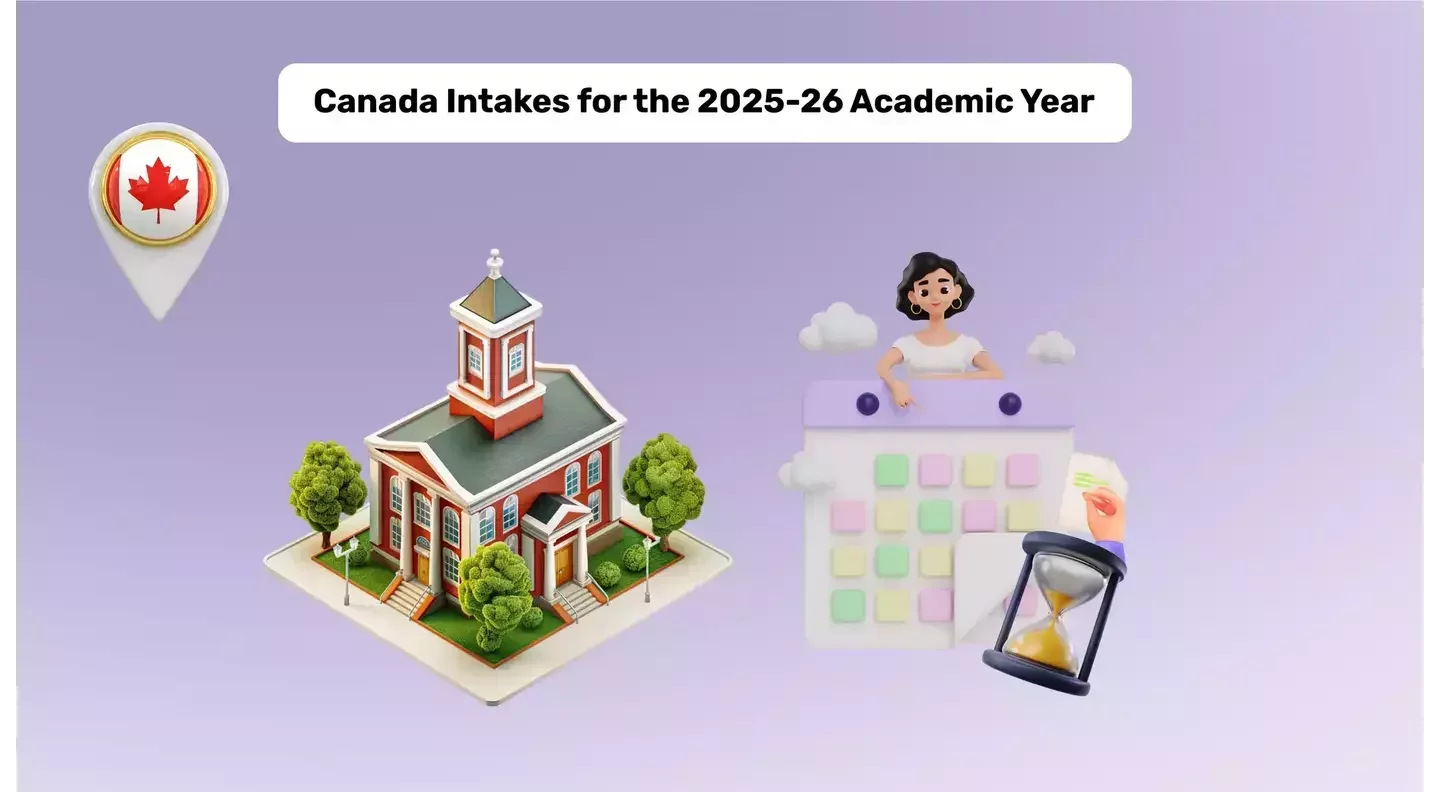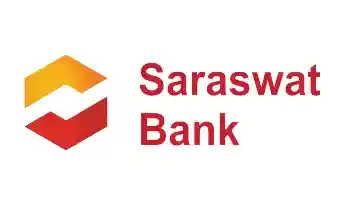Get instant loan offer suitable to your profile !


On this Page:
Discover the updated 2025-2026 guide for applying to Canadian universities. Get insights on eligibility, application steps, deadlines, and tips to maximize your chances of studying in Canada.
Canada is well known for its quality education and welcoming culture. Students can expect diverse exposure and great potential in their careers. This is evident from the fact that 19 Canadian universities are ranked in the top 500 of the QS World University Rankings. Thus, if you are considering taking admission, marking the Canada university application deadline 2025 is important. To decrease your workload, we have come up with the summaries. This includes all the courses and university details, which can help you plan better for your 2024 academic year in Canada.

Canada's universities offer three major intakes in the year, and every Canadian universities application deadlines. Let’s learn about them in detail.
The most popular intake season and the Canadian university deadlines are from December to March. This intake offers a wide range of undergraduate and postgraduate programs.
This intake has limited programs opening and less number of applications are accepted. The application deadline for this intake is from September to November.
The Spring intake is best if you are planning to pursue short-term or internship programs. Most universities accept applications from March to April.
| Intake | Application Period | Popular Courses | Popular Universities |
|---|---|---|---|
|
Fall Intake |
December to March |
Business Administration, Computer Science, Mechanical Engineering, Electrical Engineering, Medicine, Law, Arts, Psychology, Architecture, Nursing |
University of Toronto, University of British Columbia (UBC), McGill University, University of Waterloo |
|
Winter Intake |
September to November |
Business, IT, Engineering (especially Mechanical and Civil), Social Sciences, Marketing |
York University, University of Ottawa, University of Calgary |
|
Spring / Summer Intake |
March to April |
Summer internships, Research-based programs, Data Science, Engineering (varies), Short-term courses in Hospitality, Tourism |
University of Toronto, Simon Fraser University, University of Alberta |
Note: The months mentioned in the table are tentative, it may vary based on the university and course you are applying for. Therefore, check the university website to confirm the Canadian University Deadline.
Want to check the deadline of a specific university? Visit the Canada University for the details.

Some of the universities are very popular among international students and they are also ranked the the QS World Ranking. Therefore, refer to the Canada universities application deadline table below to plan your study abroad journey.
| University | Fall Intake Application Deadline | Winter Intake Application Deadline | Spring/Summer Intake Application Deadline |
|---|---|---|---|
|
January 22, 2025 |
- |
March 15, 2025 |
|
|
February 1, 2025 |
- |
- |
|
|
February 1, 2025 |
- |
March 1, 2025 |
|
|
January 15, 2025 |
August 1, 2025 |
October 1, 2025 |
|
|
- |
January 15, 2025 |
January 15, 2025 |
|
|
January 8, 2025 |
February 1, 2025 |
- |
|
|
March 1, 2025 |
- |
- |
|
|
University of Montreal |
- |
September 1, 2024 |
February 1, 2025 |
Note: Some universities have not provided the dates for some intakes therefore, keep your eyes on the website for updates. However, the dates are subject to change based on the course.

Every student has to work on their application however, timelines are required to be prepared to apply on time. Therefore, you can use the following timeline to apply for the Fall intake 2025.
| Months | Task | Description |
|---|---|---|
|
December 2024 |
Research Universities & Check Eligibility |
Start researching universities in Canada offering courses in Fall intake. |
|
January 2025 |
Prepare for the Language Proficiency Test |
Start preparing for language exams like IELTS, TOEFL, or PTE (depending on your course and university requirements). |
|
Early February 2025 |
Finalize University |
Confirm the universities and programs. |
|
Late February 2025 |
Register for Language Tests & Prepare Documents |
Register for your IELTS/TOEFL/PTE exams. Also, prepare the documents for the application. |
|
March 2025 |
Take the Language Proficiency Test & Apply |
Take the language proficiency exams like IELTS, TOEFL, or PTE. Begin filling out the application forms for your selected universities. |
|
Late March 2025 |
Submit University Applications |
Complete and submit your university applications, including the SOP, recommendation letters, CV, and transcripts. |
|
May 2025 |
Receive the Letter of Acceptance (LOA) and apply for a Visa |
Once you receive the offer letters from Canadian universities, review them. Next, apply for a student visa. |
|
June 2025 |
Visa Interview |
Carry all your documents and attend the visa interview. |
|
July 2025 |
Visa Approval |
Get your visa approval and start preparing for other stuff. |
|
September 2025 |
Packing and Arrive in Canada |
Pack your belongings and arrive a few days before the semester begins to settle in. |

Students who forgot to apply for the Fall intake of 2025 can take advantage of the Winter intake. Canadian universities with late deadlines open admissions for some major courses, so create a plan so that you don’t miss out on the deadlines.
| Months | Task | Description |
|---|---|---|
|
January 2025 |
Research Universities & Check Eligibility |
Check the available courses and the eligibility criteria. |
|
February 2025 |
Prepare for the Language Proficiency Test |
Start preparing for the English tests, however, as you have time try to score the maximum of the eligibility criteria. |
|
April 2025 |
Register for Language Tests |
Register for your English exams. |
|
May 2025 |
Arrange the Documents |
For admission you need LOR from teachers and SOP, so start writing. Make sure that you prepare the visa documents also to save time. |
|
June 2025 |
Get the English Test Result |
Based on your results apply to the most suitable university and course. |
|
September 2025 |
Apply for Admission |
Apply for admission before it is late. |
|
October 2025 |
Receive offer letter |
Confirm the terms and conditions before you secure your seat in the university. |
|
Late October 2025 |
Apply for the student visa |
As SDS is removed ensure to start the application for the visa as soon as you receive the offer letter. |
|
December 2025 |
Receive the visa approval |
In December you will receive the approval on your visa. |
|
January 2026 |
Take your dream flight |
Pack your stuff and reach Canada one week early the course starts. |

Students who are looking to upskill and experience new things can take advantage of the Summer intake of 2025. This intake allows you to enroll in courses that can help you learn a new hobby or gain new experiences related to your field.
| Months | Task | Description |
|---|---|---|
|
December 2024 |
Research Universities & Programs |
Based on your stream check the available courses and the popular universities. |
|
January 2025 |
Prepare for the English Exam |
Universities ask for the English exams thus, prepare for the accepted English test. |
|
February 2025 |
Attend the English Exam |
Register and attend the English exam to ensure that you score maximum to fall in the eligibility criteria. |
|
March 2025 |
Apply for admission |
Prepare the documents and apply for admission. |
|
April 2025 |
Receive the Letter of Acceptance (LOA) |
Confirm the program and the tuition fee on the offer letter. Ensure to secure your spot in the university. |
|
May 2025 |
Submit the Visa Application |
Make sure that you provide the visa application on time to get the approval before the course date. |
|
August 2025 |
Book your tickets and board the plane |
At least one-week early arrival is advised. Ensure to customize the plan as per the course start date. |
To evaluate your chances of getting admitted to your dream universities use the ultimate admit predictor for free. This tool will help you maximize your chances of acceptance.

International students must keep track of important dates, or they may lose the chance to study at their dream university. Here are some tips to ensure you don’t miss the Canada university application deadline 2025:





When students are prepping to study abroad, they must take care of certain things to secure their student visa and offer letter. Here are some common things you should avoid or you risk missing your dream opportunity:




As an international student in Canada, missing out on Canada uni
Check Your Education Loan Eligibility

Ask from a community of 10K+ peers, alumni and experts
Trending Blogs
Similar Blogs

Network with a community of curious students, just like you
Join our community to make connections, find answers and future roommates.. Join our CommunityCountry-Wise Loans
Best Lenders for Education Loan

ICICI Bank

Axis Bank

Union Bank

Prodigy

Auxilo

Credila

IDFC

InCred

MPower

Avanse

SBI

BOB

Poonawalla

Saraswat